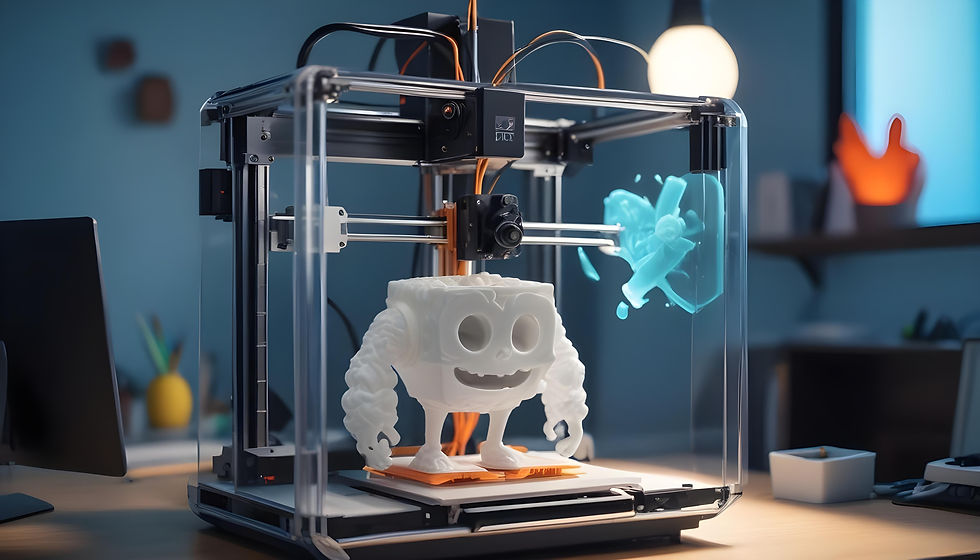How to choose the right resin for your SLA project
- Sandeep Kadam
- Jul 7
- 2 min read
Updated: Jul 8

If you've ever tried to pick a resin for your SLA 3D print, you already know it’s not just about picking a color.
From castable jewellery resins to tough industrial blends, the material you choose can make or break your project.
So whether you're prototyping in Andheri, creating jewellery masters in Zaveri Bazaar, or building a miniature model in Vashi, here’s a practical guide to help you choose the right resin for your SLA job.
1. Start with the purpose
The easiest way to choose the right resin is by asking: What is this model for?
· Jewellery casting? You'll want a castable resin that burns clean without ash.
· Presentation prototype? Go with standard resin—smooth surface, clean details.
· Functional testing? Choose tough or engineering resin for durability.
· Miniature or art piece? Use high-detail or pigmented resin for sharp, vivid prints.
Each use case has an ideal resin, and picking it early saves rework and cost.
2. Understand resin types
Here are the common SLA resin types you’ll find at print studios in Mumbai and Navi Mumbai:
• Standard resin
Great for general-purpose models. Comes in grey, white, and transparent. Affordable and quick to print. Best for: Visual prototypes, models, and art pieces.
• Castable resin
Special resin for lost-wax casting. Burns out clean with zero ash. Best for: Gold, silver, or brass jewellery masters. Common in studios near Charni Road and Kalbadevi.
• Tough resin
Strong and impact-resistant. Simulates ABS or nylon. Best for: Functional parts, enclosures, brackets, or mechanical testing.
• Flexible resin
Bends under pressure. Think soft-touch components. Best for: Rubber-like parts, gaskets, or ergonomic prototypes.
• High-temp resin
Resists heat up to 230°C+.Best for: Moulds, dental parts, or engineering pieces exposed to heat.
3. Know your finish and detail needs
If you want:
· Smooth, polished surfaces → Go for standard or high-detail resins
· Fine engravings or intricate textures → Use castable or pigment-heavy resin
· Semi-transparent effects → Try clear or tinted translucent resin
Artists in Lower Parel often use pigmented resins for character design, while industrial designers in Belapur choose matte greys for accurate visual modelling. |
4. Consider post-processing and cost
Some resins need extra curing or UV exposure. Others print fast and require minimal cleanup.
· Castable and tough resins typically cost more than standard ones.
· Flexible resins may need slower print settings, increasing service time.
Ask your local print studio about finish quality, curing time, and polishing options especially if deadlines are tight.
Final thoughts: how to choose the right resin
The resin you pick sets the tone for your entire 3D print. The right choice means:
· Smoother workflow
· Better final results
· Less waste and fewer iterations
If you're unsure, just reach out to a local SLA print provider in Mumbai or Navi Mumbai. Most will guide you based on your model type, file format, and intended use.
Let your project lead the material and let the right resin do the magic




Comments